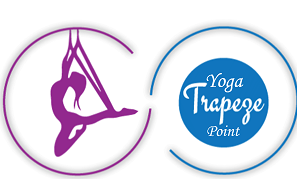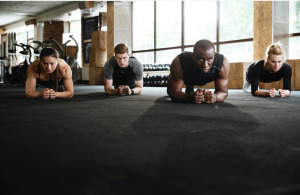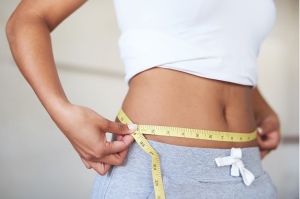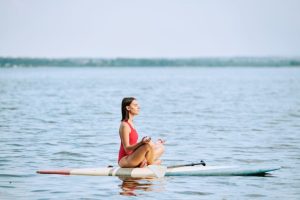Experience Sun Salutation Yoga poses! Reap maximum benefits

The four pillars of yoga are posture, breathing practices, deep relaxation & meditation. Yoga is a century-old tested mind-body exercise that transforms you to the next level! The overall yoga poses indicate how this mind-body workout makes one unique & strong. The sun salutation yoga pose is a long-time oriented worldwide global bow-down to the sun as lifegiving energy & connecting with the universal source of vitality & light. Stay tuned with us.
Descriptions of Sun salutation yoga
Sun Salutation, also known as Surya Namaskar in Sanskrit, is a popular sequence of yoga postures that is often performed at the beginning of a yoga practice. It is a dynamic and flowing series of poses that combines movement, breath, and mindfulness. Sun Salutation is not just a physical exercise; it is a holistic practice that integrates the body, mind, and spirit at the same time!
The Sun Salutation sequence consists of a series of 12 postures that are performed in a specific order. Each pose seamlessly transitions into the next, creating a graceful and continuous flow of movement. The sequence is traditionally practiced facing the rising or setting sun, hence the name “Sun Salutation.”
The postures in Sun Salutation provide a wide range of physical and mental benefits. Let’s explore the individual poses and their significance:
1. Pranamasana (Prayer Pose)

Indeed, joining palms together in the prayer pose is the highest form to pay tribute to someone, isn’t it? The people across globally show its sign from their prior ancestry. Pranamasana, derived from Sanskrit, combines two elements: ‘Pra,’ meaning ‘before’ or ‘in front of,’ and ‘Anama,’ meaning ‘bending forward.’ This asana embodies the act of expressing reverence or surrendering our inner essence to someone or something we hold great reverence for.
2. Hastauttanasana (Raised Arms Pose/Upward salute)

Inhaling, the arms are lifted overhead, stretching the whole body and lengthening the spine. This pose helps to improve posture and increase lung capacity
Hasta Uttanasana, known as “Raised Arms” or “Raised Hands” in Sanskrit, is a fundamental yoga posture classified under the standing category. This asana primarily focuses on the chest, shoulders, and spine, while also engaging the knees and quadriceps muscles. By raising the arms or hands, this pose facilitates the expansion of the lungs, stretches the abdominal organs, elongates the torso and spine, and evokes a sense of openness and expansion.
3. Uttanasana (Standing Forward Bend/Hastapadasana)

The Sanskrit word Uttanasana is made up of “ut,” which means “intense,” “powerful,” or “deliberate,” and the verb “tan,” meaning to “stretch” or “lengthen.” Uttanasana is a purposeful extension of the entire back body—including the territory from the soles of the feet and up the backs of the legs.”
4. Low lunge(Ashwa Sanchalanasana)

More commonly known as Low Lunge is part of the original Surya Namaskar sequence as taught by Krishnamacharya, The Father of Modern Yoga.
The equestrian pose, also known as Ashwa Sanchalanasana in yoga, embodies a harmonizing stance that imparts valuable lessons on establishing equilibrium by harmonizing opposing forces. Its Sanskrit name, Ashwa Sanchalanasana, originates from the combination of “Ashva” meaning horse, “Sanchalana” signifying stepping movement, and “asana” representing seat or posture. Among Western practitioners, it may alternatively be called the low lunge or horse-riding pose. Through this posture, yoga enthusiasts learn the art of balance and stability, integrating the essences of strength and poise.
5. Plank (Dandasana)
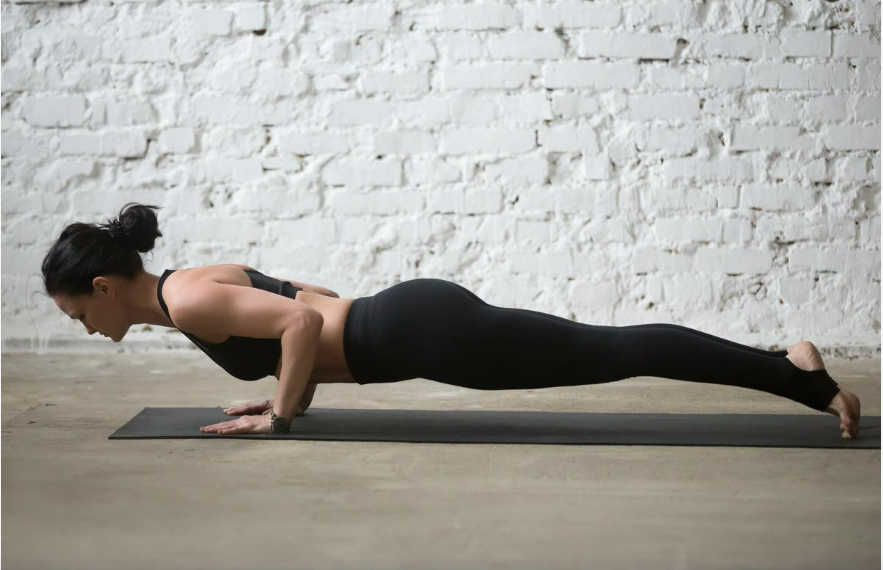
The low plank pose, commonly referred to as Chaturanga Dandasana, goes by two different names for specific reasons. In Iyengar yoga, it is often known by its shorter name, while in Ashtanga, vinyasa flow, and other styles, the longer name is used.
Chaturanga Dandasana is a remarkable posture that serves as both an arm balance and a core strengthener. By combining elements of a push-up and plank pose, it effectively enhances upper body strength and cultivates a core that is as sturdy as steel. Moreover, this pose imparts valuable lessons on harnessing inner strength and channeling it to progress into more intricate arm balances.
.6.Ashtanga Namaskara (Eight-Limbed Pose): Ashtanga Namaskara, also known as the Eight Limbed salutation or asana, derives its name from the eight points of contact with the mat: both feet, knees, palms, chest, and either the chin or forehead. This posture holds significance in Indian culture as it is performed to show respect to elders, gurus, or deities when visiting temples, as well as to pay homage to the Hindu Sun god.
In the Sun Salutation (Surya Namaskara), Ashtanga Namaskara is positioned sixth in the sequence. It serves as a prone posture, where you lie on your stomach, and acts as a transitional pose. Bhushan Bhukte, a Senior Yoga Teacher from the Heartfulness Yoga Academy, graciously provides a step-by-step guide to performing Ashtanga Namaskara.
7. Bhujangasana (Cobra Pose)
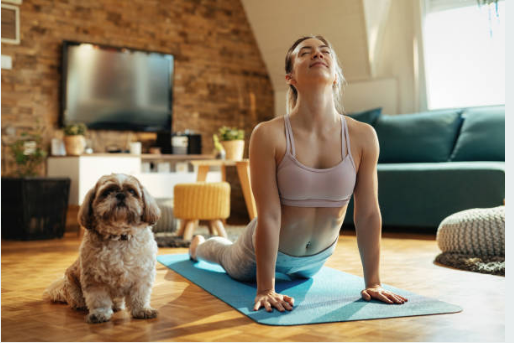
Bhujangasana, derived from the Sanskrit words “Bhujanga” meaning cobra or snake, and “asana” meaning pose, is commonly referred to as the Cobra Stretch. This particular pose is featured in the Suryanamaskar (Sun Salutations Pose) as well as Padma Sadhana.
Bhujangasana, or Cobra Stretch, offers a simple yet effective solution to various issues, all from the comfort of your own home. By practicing this pose, whether sitting or lying down, you can experience numerous benefits. When performed while lying on your stomach, Bhujangasana provides a rejuvenating stretch to your body, particularly targeting the back, and has a remarkable ability to alleviate stress almost instantly.
8. Adho Mukha Svanasana (Downward-Facing Dog Pose)

Adho Mukha Svanasana, commonly known as Downward Facing Dog, holds a prominent position in the realm of yoga. It features prominently in the Sun Salutation sequence, further solidifying its significance in the practice of yoga.
This iconic asana has gained widespread recognition due to its vital role in modern-day practice. Often introduced as one of the initial poses for beginners, it reappears frequently throughout various yoga classes, especially in Vinyasa yoga. Serving both as a transitional posture and a resting position, the Downward Facing Dog is highly valued.
How to do it?
Keep both toes pointed towards the front of your mat and sink your heels toward the floor.
Exhaling, the palms are placed on the mat, and the body is lifted into an inverted V-shape, with the heels reaching toward the ground. Downward-Facing Dog stretches the entire body, particularly the shoulders, hamstrings, and calves. It also rejuvenates the mind and improves blood circulation to the brain.
9. Ashwa Sanchalanasana (Low Lunge)
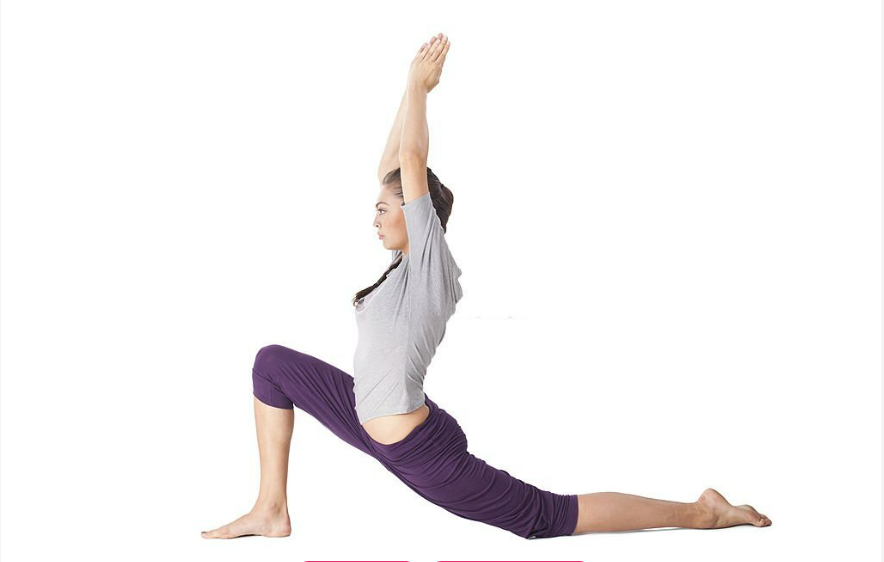
Inhaling, the opposite leg is brought forward into a lunge position, mirroring the previous low lunge that we mentioned here in no.4. This pose provides a deep stretch to the hip flexors and activates the leg muscles.
10.Standing Forward Bend (Hasta Padasana)

Derived from the Sanskrit words “hasta” meaning hand, “pada” meaning foot, and “asana” meaning pose, Hastapadasana, also known as the Forward Bend Pose, receives its name. This pose holds a significant place among the twelve fundamental yoga postures and is strongly encouraged for daily practice by all yoga enthusiasts.
Engaging in Hastapadasana offers a multitude of benefits that contribute to overall well-being. Regular practice of this pose aids in the alleviation of various health issues, enhances flexibility and strength, and fosters heightened levels of concentration. By incorporating Hastapadasana into your daily routine, you can experience a profound positive impact on both your physical and mental aspects.
11. Hastauttanasana (Raised Arms Pose/Upward Salute)

Inhaling, the arms are lifted overhead, repeating the raised arms pose.
12. Pranamasana (Prayer Pose)

Exhaling, the hands return to the prayer position, completing the sequence.
The Sun Salutation sequence can be repeated several times, synchronizing each movement with the breath. It helps to warm up the body, increase flexibility, build strength, and improve overall body awareness. The continuous flow of the poses creates a sense of fluidity and rhythm, promoting a meditative state of mind.
To sum up, the Sun Salutation is an exquisite and potent series of yoga postures that harmoniously intertwines movement, breath, and mindfulness. This sequence presents a multitude of physical, mental, and spiritual advantages, creating a comprehensive practice for holistic well-being. By integrating the Sun Salutation into your regular yoga routine, you can infuse your day with revitalizing energy, heightened focus, and a profound sense of unity with both yourself and the surrounding world. It is a remarkable way to embark on each day, nurturing your overall well-being and fostering a deep connection within.
